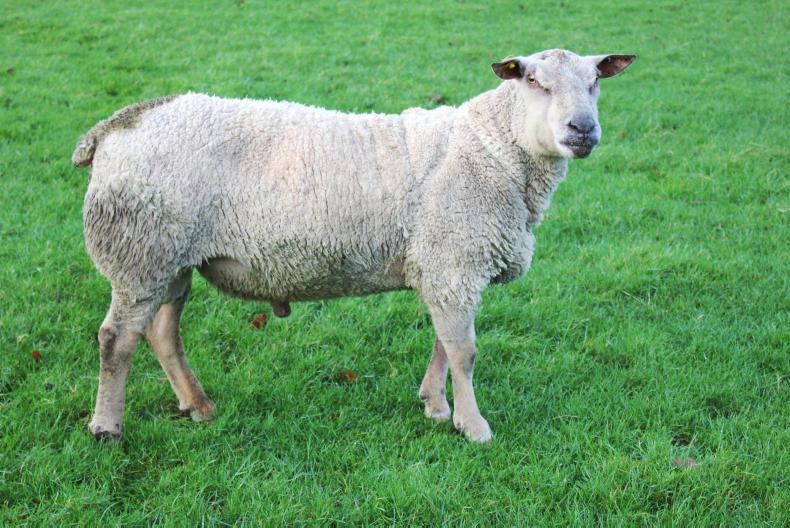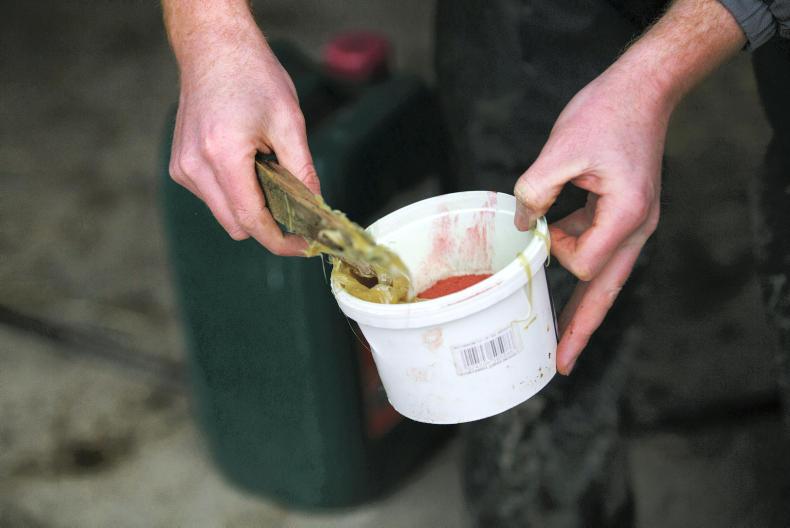Preparing for breeding begins about 10 weeks beforehand, as it takes time to adjust body condition score (BCS) and to deal with infertile rams and lameness issues.
Ewes will start breeding based on daylight shortening and melatonin release. They will come around every 15 to 17 days, and generally will be in heat for about 24 hours.
There are several factors that can influence this, but in simple terms there are three key aspects: a healthy sperm has to meet a healthy egg in a suitable environment for conception to take place.
Having a plan for breeding can really make a difference to this outcome.
The non-breeders
Every sheep farmer should have a black book from the year before that has ewes that had difficulties at lambing, prolapses, lameness or mastitis.
Along with bad mothers or one-spinners, decisions should be made about keeping these ladies for another breeding season.
The ram effect
When introduced to ewes, rams will actually bring on heats and can stimulate a healthy ovulation. You can tighten up lambing periods with the introduction of vasectomised rams at the start of breeding.
Ewes must not see or smell the rams for three weeks before introduction
There will be a peak of heats 18-23 days after first exposure to vasectomised rams.
Ewes must not see or smell the rams for three weeks before introduction – they can be left in the field for no longer than 10-14 days. Ideally, we use two vasectomised rams to 100 ewes.
Rams are then introduced, however be careful as you may need more rams with more ewes cycling together; needing a 1:20 ram to ewe ratio to begin with.
Sponging ewes
You can also use a hormone called progesterone administered by a sponge to synchronise ewes.
The sponge is inserted for 14 days into the vagina and if ewes are cycling they come in heat 36 to 48 hours after sponge removal. We can also inject PMSG at sponge removal to encourage ovulation.
Only introduce rams 36-48 hours after sponge removal, as otherwise they may over-mate with the first ewes to cycle. For this we need to really up our ram numbers, from one ram to 10-12 ewes.
The ram
He is very much a sexual athlete and 50% of our conception is down to him having good libido and healthy sperm.
We can check his libido by using raddles to make sure he is mounting and marks ewes.
We can check his sperm about six weeks out from breeding using electro ejaculation, or again by changing raddle colours and watching for repeat ewes.

The ram is a sexual athlete.
Every ram on-farm needs a full MOT six weeks out from breeding, and again a week before. Check their teeth; check for good BCS (3.5-4.0); check their testicles, feeling for swelling or pain; and finally check all four feet.
The testicles should feel firm but soft, and quite even.
Remember any infections or lameness can knock out fertility (sperm) for six to eight weeks.
Something many farmers do is getting the ram to ewe ratio right, especially where we synchronise cycles or use the ram effect. Different breeds will have different libido, but the aim should be one ram to 40 ewes.
Raddling rams
This is done using a harness with a coloured crayon attached, or just using paint on the ram’s brisket.

A simple raddle can be paint on the brisket, topped up regularly.
This will allow us to assess the ram’s work, how breeding is progressing and it will also allow us group ewes for lambing time and feeding next spring.
Preparing for breeding begins about 10 weeks beforehand, as it takes time to adjust body condition score (BCS) and to deal with infertile rams and lameness issues.
Ewes will start breeding based on daylight shortening and melatonin release. They will come around every 15 to 17 days, and generally will be in heat for about 24 hours.
There are several factors that can influence this, but in simple terms there are three key aspects: a healthy sperm has to meet a healthy egg in a suitable environment for conception to take place.
Having a plan for breeding can really make a difference to this outcome.
The non-breeders
Every sheep farmer should have a black book from the year before that has ewes that had difficulties at lambing, prolapses, lameness or mastitis.
Along with bad mothers or one-spinners, decisions should be made about keeping these ladies for another breeding season.
The ram effect
When introduced to ewes, rams will actually bring on heats and can stimulate a healthy ovulation. You can tighten up lambing periods with the introduction of vasectomised rams at the start of breeding.
Ewes must not see or smell the rams for three weeks before introduction
There will be a peak of heats 18-23 days after first exposure to vasectomised rams.
Ewes must not see or smell the rams for three weeks before introduction – they can be left in the field for no longer than 10-14 days. Ideally, we use two vasectomised rams to 100 ewes.
Rams are then introduced, however be careful as you may need more rams with more ewes cycling together; needing a 1:20 ram to ewe ratio to begin with.
Sponging ewes
You can also use a hormone called progesterone administered by a sponge to synchronise ewes.
The sponge is inserted for 14 days into the vagina and if ewes are cycling they come in heat 36 to 48 hours after sponge removal. We can also inject PMSG at sponge removal to encourage ovulation.
Only introduce rams 36-48 hours after sponge removal, as otherwise they may over-mate with the first ewes to cycle. For this we need to really up our ram numbers, from one ram to 10-12 ewes.
The ram
He is very much a sexual athlete and 50% of our conception is down to him having good libido and healthy sperm.
We can check his libido by using raddles to make sure he is mounting and marks ewes.
We can check his sperm about six weeks out from breeding using electro ejaculation, or again by changing raddle colours and watching for repeat ewes.

The ram is a sexual athlete.
Every ram on-farm needs a full MOT six weeks out from breeding, and again a week before. Check their teeth; check for good BCS (3.5-4.0); check their testicles, feeling for swelling or pain; and finally check all four feet.
The testicles should feel firm but soft, and quite even.
Remember any infections or lameness can knock out fertility (sperm) for six to eight weeks.
Something many farmers do is getting the ram to ewe ratio right, especially where we synchronise cycles or use the ram effect. Different breeds will have different libido, but the aim should be one ram to 40 ewes.
Raddling rams
This is done using a harness with a coloured crayon attached, or just using paint on the ram’s brisket.

A simple raddle can be paint on the brisket, topped up regularly.
This will allow us to assess the ram’s work, how breeding is progressing and it will also allow us group ewes for lambing time and feeding next spring.








 This is a subscriber-only article
This is a subscriber-only article










SHARING OPTIONS: